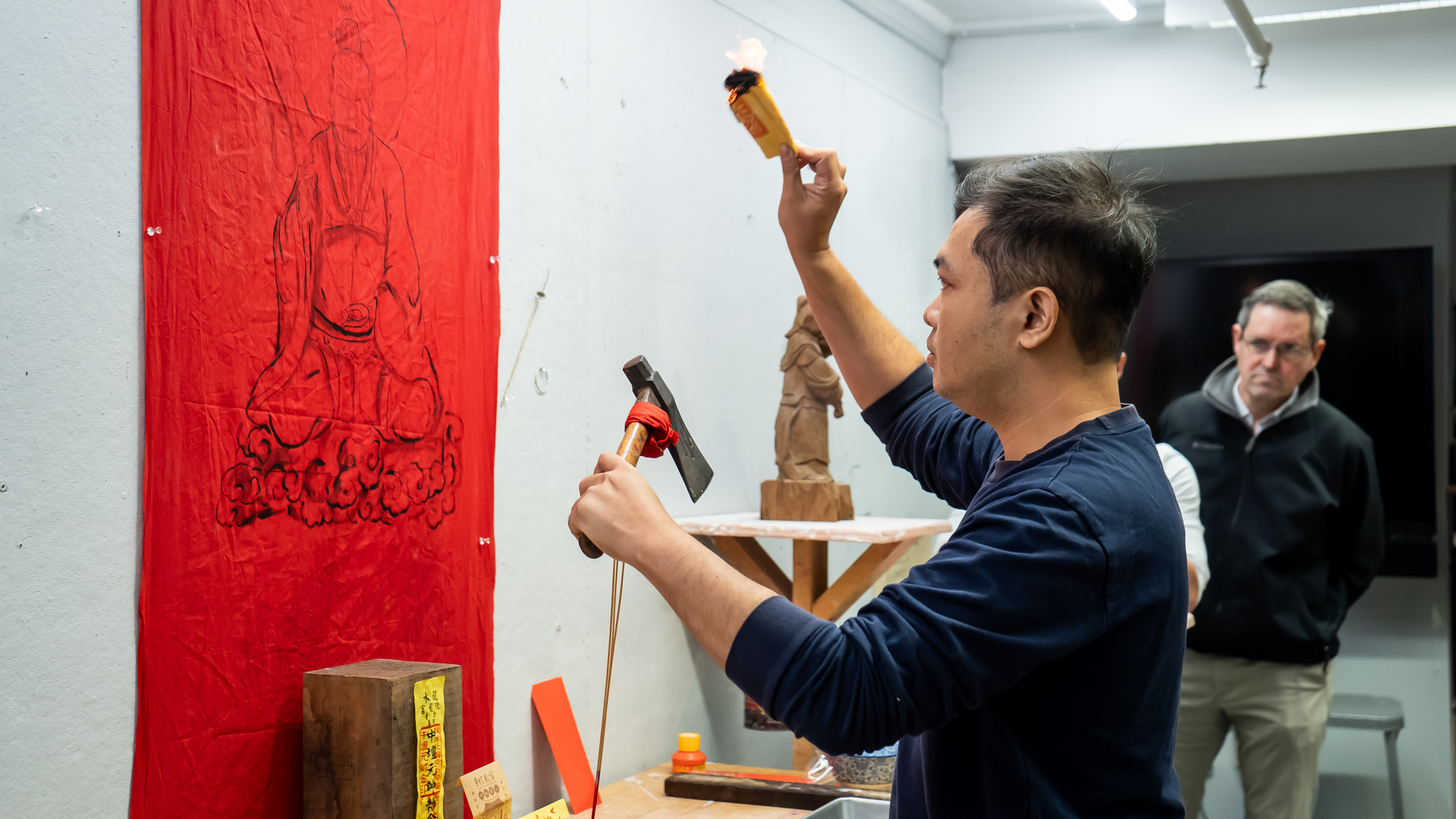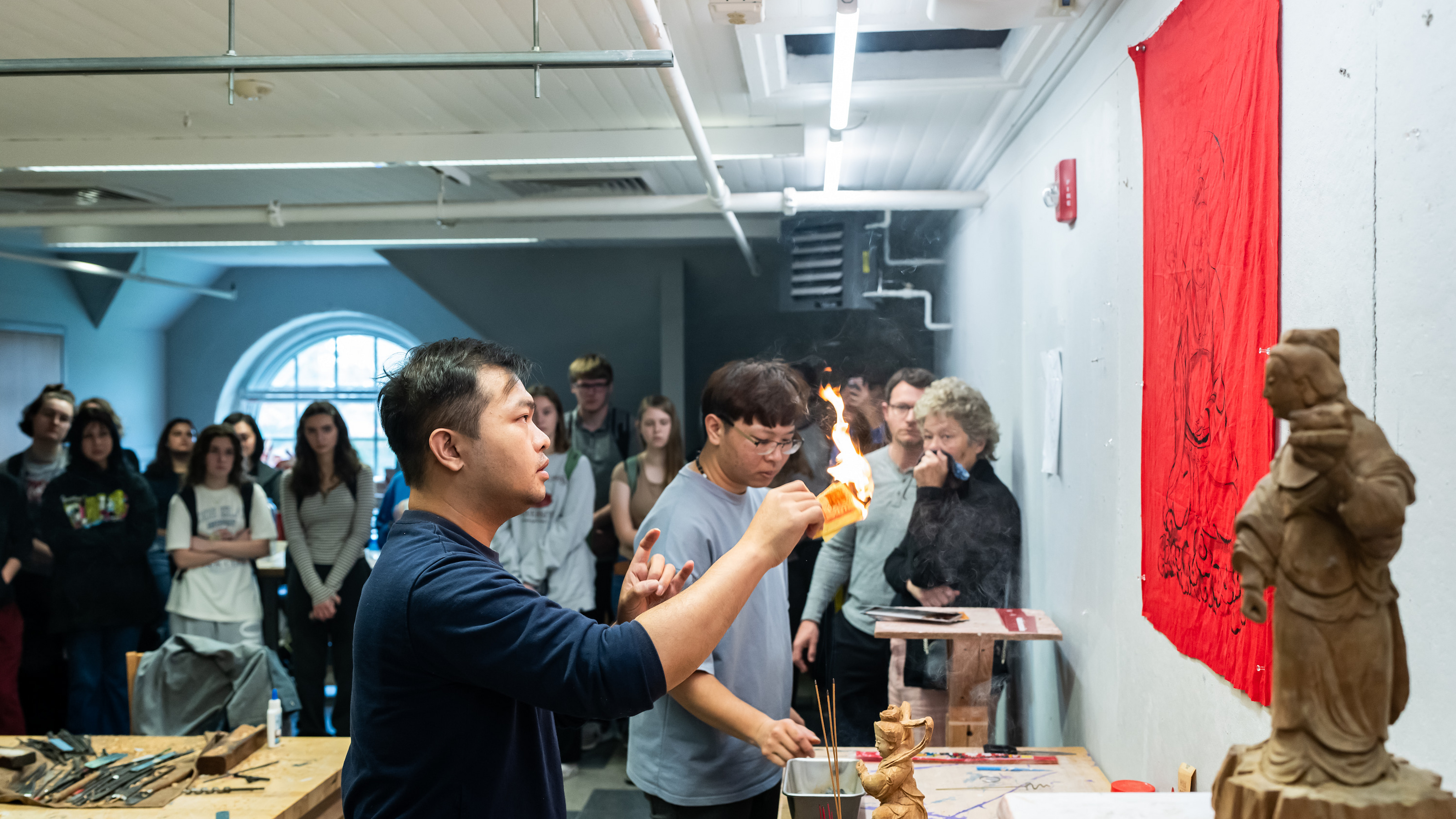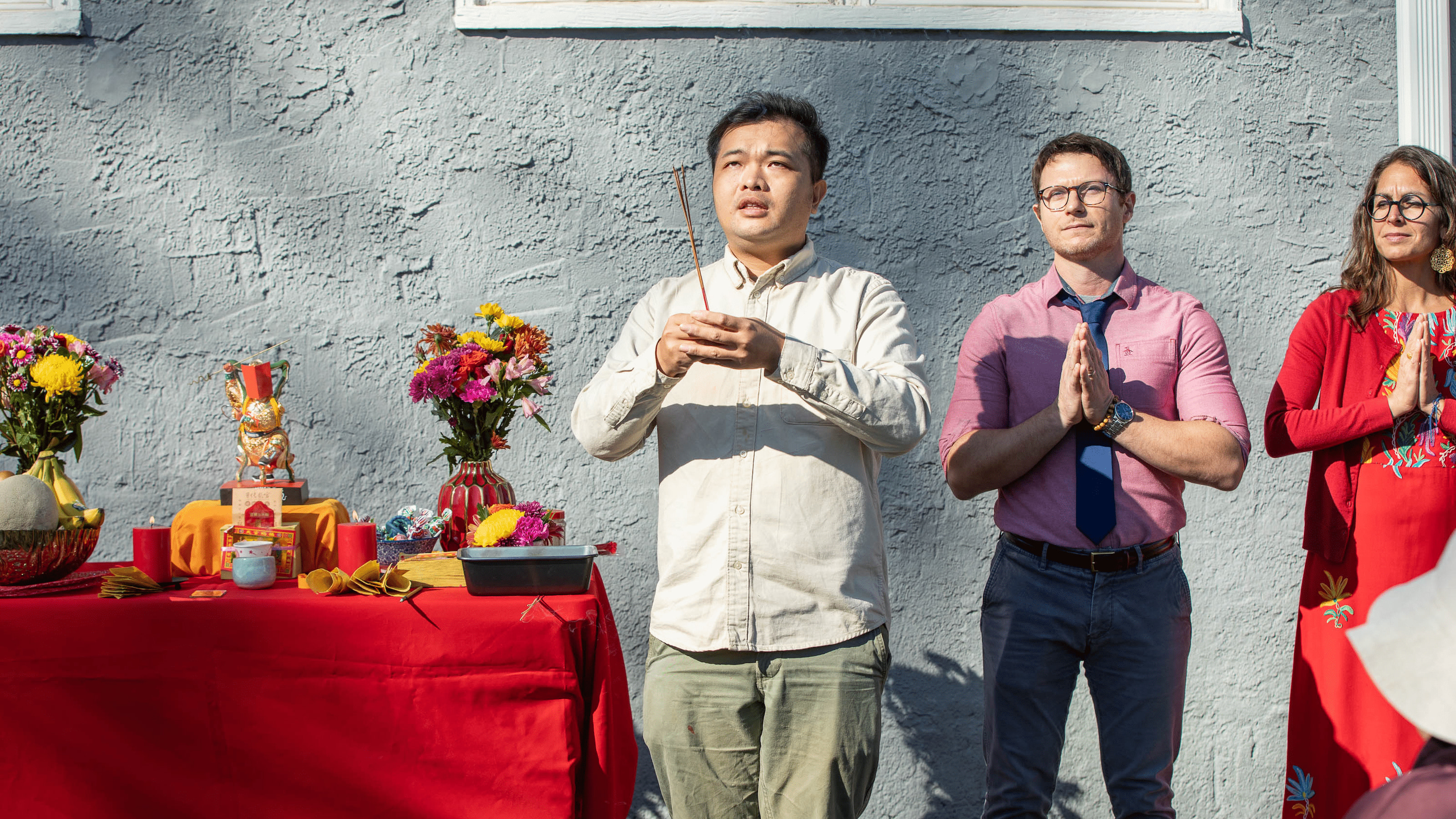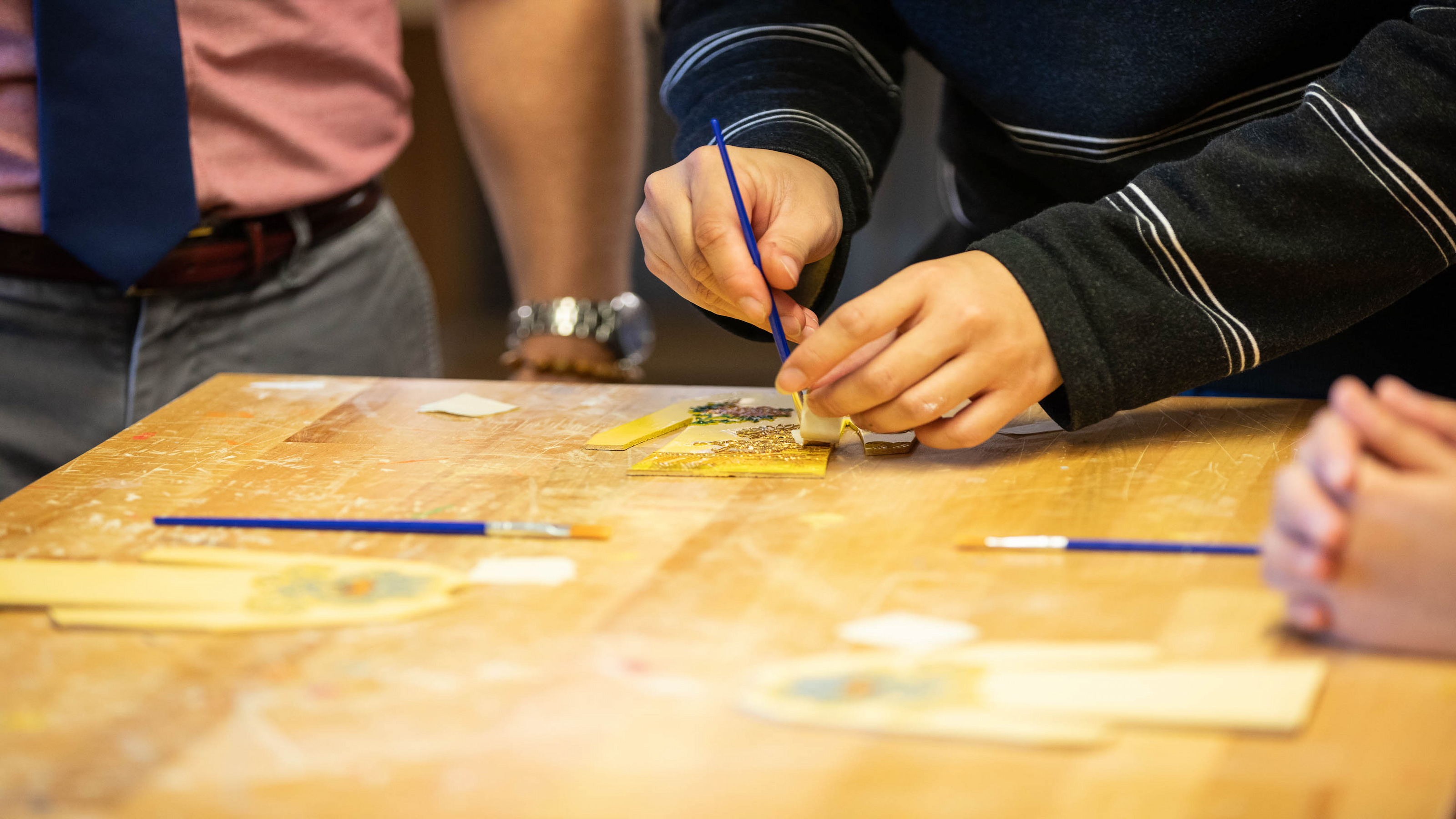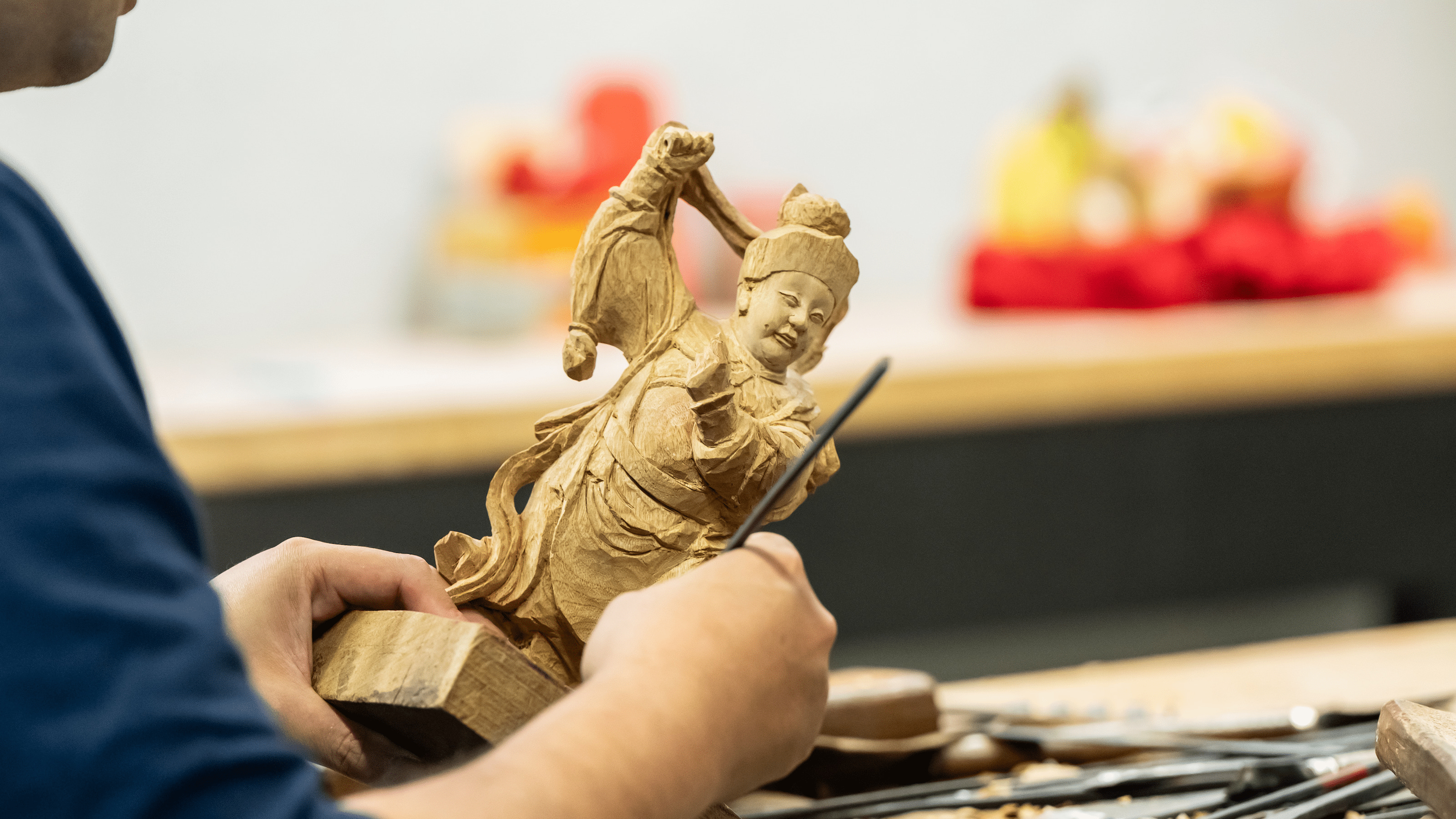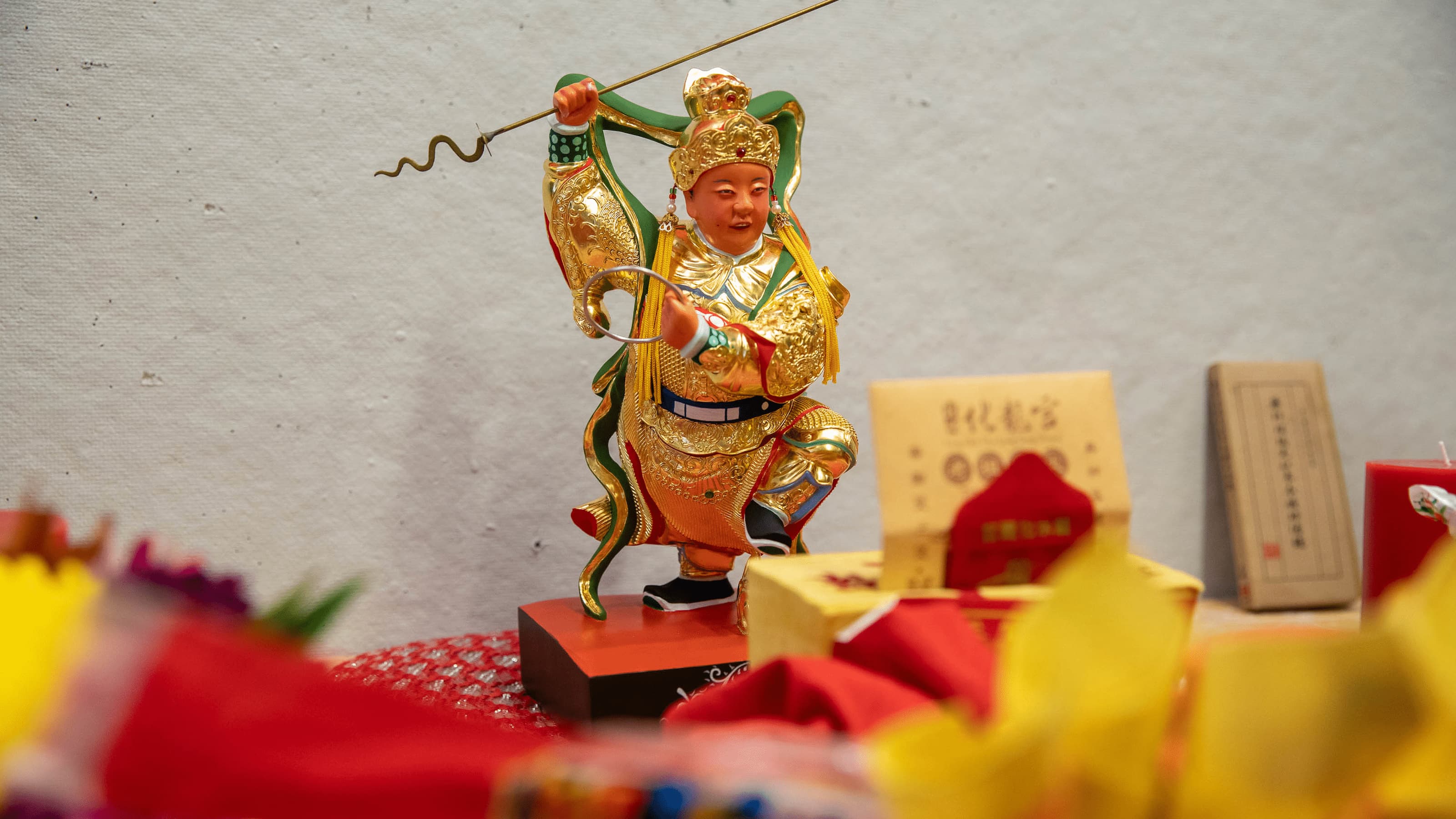When Heaven Meets Earth: Bringing Taiwanese Culture to Hawk Hill
A prominent statue carver introduced Saint Joseph’s students to Taiwan’s religious culture during his two weeks as an artist-in-residence on Hawk Hill.
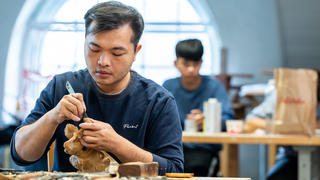
It took over 20 hours and nearly 8,000 miles for Chen Zongwei, a prominent statue carver from Taiwan, to get to Philadelphia for an artist-in-residence program at Saint Joseph’s University. Catching a glimpse of his work in action is a rarity — Zongwei’s studio runs a four-year wait list — but members of the University community got a front-row seat during the two-week event “When Heaven Meets Earth: Experiencing Taiwan’s Sacred Statues.”
Ahead of a community workshop, Zongwei reflected on his experience coming to the United States for the first time with event organizers Aaron Reich, PhD, assistant professor of religious studies, and Amber Abbas, PhD, associate professor of history and director of the Asian Studies Program.
“I have always wanted to come to the U.S. since I was a kid,” said Zongwei, “and I like the air quality.”
Reich laughed as he asked Zongwei what else he liked about the United States and why he decided to come to Saint Joseph’s. He again pondered and replied that he wanted to promote cultural art and highlight unique aspects of Taiwanese religion.
“Our cultures are very different,” said Reich. “I teach courses categorized as Religious Difference courses at Saint Joseph’s. I remind my students that, while we learn and explore differences, we can also learn about what is universal and shared.”
Zongwei, along with his two assistants Huang Yusheng and Wu Shuming, were invited to Saint Joseph's as part of the University's Nealis Program in Asian Studies. While on Hawk Hill, they carved a traditional, sacred, wooden statue of one of Taiwan’s most important gods, Nezha the Third Prince.
This is probably the first time in history that a statue carver has come to the U.S. with his own statues and carved and consecrated a new one on U.S. soil.
Aaron Reich, PhD
Assistant Professor of Religious StudiesAlong with community workshops, there was a gallery exhibit in Boland Hall. Zongwei had nine statues on display, eight of which were sacred. Each one was borrowed from temple and domestic altars in Taiwan to be displayed for the exhibition. Additionally, there were open studio times where students and local community members could watch Zongwei carve the statue.
“Having students learn through hands-on experiences is the goal of the Nealis Program,” said Abbas. “James J. Nealis III ’69 and his wife, Bernadette, are committed to supporting the study of Asian languages and cultures by all. To have an opportunity to be with people from another country is special.”
Over 150 people joined the community workshops to learn from Zongwei, who apprenticed under Shi Zhihui, a 90-year old artist and one of Taiwan’s most renowned statue carvers. Each participant received a small, thin piece of wood shaped like a clothing garment. Zongwei and his assistants taught participants to create a design using lacquer thread and then apply gold leaf and color pigments.
“I quickly realized how difficult the process is by working with the lacquer thread,” said Kristen Wagner ’25, an entrepreneurship major. “I thought it would be a breeze, but it made me realize the artists’ talent. I can now see these statues in a new light.”
As part of the open studio times, Zongwei performed three traditional ceremonies: Kaifu, Rushen and Kaiguang. Each ceremony is critical to Zongwei’s artistic process, performed every time he makes a new statue.
The Kaifu ceremony, meaning “to open with a hatchet,” marks the announcement to the gods, letting them know that Zongwei will start making a new statue. The Rushen ceremony, meaning “to embed the spirit,” affirms the statue’s potential to bind it to the divine presence of the deity whom the statue will represent. Finally, the Kaiguang ceremony, meaning “to open the radiance,” activates the statue, blesses it, gives it life and connects it to Nezha the Third Prince, the god whom the statue represents.
“The Rushen ceremony was fascinating,” said Wagner. “We put our breath on the incense, which is supposed to bring us good luck and fortune. He then took the incense of everyone’s breath in the room and put it in the back of the statue. This ceremony allowed me to relax and step away from reality by welcoming the deity.”
At a closing banquet on Nov. 3, Abbas, Reich and other Saint Joseph’s community members reflected on the successful program and thanked Zongwei and his assistants for their work. As a surprise and symbol of appreciation, Zongwei added a hawk to the garment of Nezha the Third Prince. The finished statue will soon have a permanent installation on the Hawk Hill campus.
For more information on The Nealis Program in Asian Studies, visit sju.edu/college-arts-and-sciences/asianstudies.

